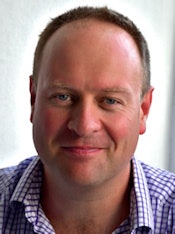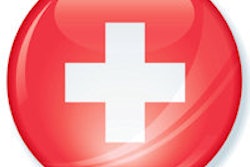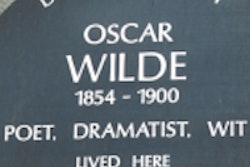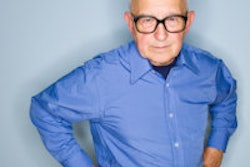
The great thing about a career in medicine is that everyone can find a niche. A friend from medical school once said radiology was definitely the best choice for me because it involved being locked in a dark room. Such was the cliché about radiology: a specialty for introverts who were bright but best kept away from patients. Imagine my surprise on day one of radiology school when I discovered most of the senior staff was affable and ebullient.
When I was a young(er) radiologist, this "talking to patients" notion was seen as a luxury and an extra. The implication was we weren't there for that kind of thing. Radiology was a technical specialty, and we were there to learn the science behind it. Communication with patients was purely a means to an end. A handshake and a few kind words to break the ice before the enema tube went in; a warning of a "small prick in the back of the hand" as the cannula was inserted. The finale of the investigation was a smile and "the result will go to your doctor"; that was about it, really.
 Dr. Paul McCoubrie is a consultant radiologist at Southmead Hospital in Bristol, U.K.
Dr. Paul McCoubrie is a consultant radiologist at Southmead Hospital in Bristol, U.K.
The topic of communication in radiology exclusively focuses on the radiologist/clinician dynamic. The notion a radiologist could have anything of use to say to a patient has been ignored. To me, this is daft. I think we are missing out on a trick here. I think radiologists can help patients feel better through communicating with them.
Like many radiologists (but not all), I have regular patient contact. Albeit mainly via ultrasound jelly rather than, say, a 20-gauge needle. Every patient walks into the room anxious and with an agenda. When I say agenda, I mean emotional and participatory needs as well as questions. Some seem disengaged; some only seek bland reassurance whereas some harbor specific questions.
There is no greater source of professional satisfaction for me than for patients to smile and genuinely thank me on the way out. It's not that I need my ego massaged -- quite the reverse, my wife is quick to point out. It simply means I have allayed their anxiety, worked out their agenda, and provided answers to spoken and unspoken questions. I take a few moments to explain any pathology that I've found, be it innocuous or bad news. I also like to give an idea of further management steps. Even if I haven't provided a definitive answer, I've explained the issues clearly enough for them to be happy.
My partially retired general practitioner (GP) father talks of therapeutic investigation. This is where investigation is a part of the consultative process, part of healing. Obviously, those coming for radiological investigation should be treated with warmth and compassion, rather than like pieces of meat in a sausage factory. That isn't all. To extract the maximum clinical utility from any investigation, we need to understand the agendas of the clinician and patient alike. This way, not only does the clinician get a clinically useful report, but the patient has a therapeutic experience. By the time patients leave the radiology department, they could already be back on the road to recovery.
I'm not advocating psychoanalysis on the ultrasound couch nor breaking bad news on the CT gantry. It isn't the right place. The point is that any patient interaction has an element of consultation and every consultation has a potential therapeutic effect. You may well think, "That's all well and groovy but I don't have the time." Neither do I. My lists always run late. Some of that could be teaching registrars to scan. When it takes them five minutes to find the portal vein (confidently labeling it CBD), this eats into your time still further. But I don't want to cut corners. I want to demonstrate the value-added service a consultant radiologist can offer; a service patients and clinicians both appreciate.
This comes at a time when besides being overworked there is immense pressure for efficiency savings. The problem is that quality measures are not quantified in radiology. To an external auditor or manager, they may as well not exist. They are only interested in how cheaply and quickly our work is done. Quality never enters into it.
I argue it's virtually impossible in radiology to be simultaneously cheap, quick, and good. You can have a fast turnaround that is cheap, but it won't be any good. You can have a fast turnaround and a good service, but it won't be cheap. Time to dig our heels in: Put quality first every time.
Dr. Paul McCoubrie is a consultant radiologist at Southmead Hospital in Bristol, U.K.
The comments and observations expressed herein do not necessarily reflect the opinions of AuntMinnieEurope.com, nor should they be construed as an endorsement or admonishment of any particular vendor, analyst, industry consultant, or consulting group.



















